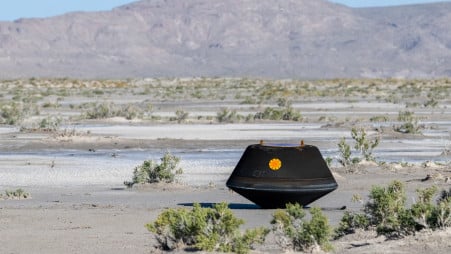NASA recently achieved an impressive feat with a capsule landing in Utah, USA, concluding a seven-year journey through space.
This mission marked the inaugural US mission dedicated to retrieving asteroid samples. It has provided crucial insights into the solar system’s formation and Earth’s potential to sustain life. The capsule’s tense descent through Earth’s atmosphere was met with relief as engineers skillfully orchestrated a soft landing in Utah’s military testing range.
The journey commenced four years ago with the launch of the Osiris-Rex probe, which ultimately touched down on the asteroid Bennu and collected approximately nine ounces of dust from its surface. After covering 3.86 billion miles, the probe began its return to Earth. The significance of this mission cannot be overstated, and the asteroid dust collected holds immense value, offering scientists invaluable insights into the early stages of the solar system.
Bill Nelson, NASA’s chief, underscored the importance of the asteroid dust, emphasizing the extraordinary glimpse it would provide into the solar system’s origins, drawing a parallel to the Apollo moon rock return. He celebrated the mission’s historical and scientific significance. The successful landing of the capsule ensured the critical airtight seal remained intact, preserving the purity of the sample and preventing contamination.
The collected sample is now en route to the Johnson Space Center in Houston for in-depth study. The majority will be preserved for future generations, with a portion allocated for immediate experiments. Additionally, a small quantity will be shared with international mission partners, including Japan and Canada.
Moreover, these celestial bodies hold important clues about the solar system’s evolution, potentially contributing to life on Earth by delivering organic materials and even water.


